Browned Butter Frosting
Learning how to create a delicious and unique frosting can elevate your baked goods to a whole new level. Browned butter frosting offers a rich, nutty flavor that complements a variety of cakes, cupcakes, and other desserts. This guide will walk you through the essential ingredients and tools, as well as the step-by-step process of making the perfect browned butter frosting.
Ingredients and tools
Ingredients and Tools for Browned Butter Frosting
Ingredients:
- 1 cup (2 sticks) unsalted butter
- 4 cups powdered sugar (confectioners’ sugar)
- 1/4 cup milk
- 2 teaspoons vanilla extract
- 1/4 teaspoon salt
Tools:
- Medium saucepan
- Mixing bowls (preferably 2)
- Rubber spatula
- Whisk
- Electric mixer with a paddle or whisk attachment (you can also use a hand mixer)
- Measuring cups and spoons
Instructions:
- Start by browning the butter. Heat the unsalted butter in a medium saucepan over medium heat. Stir the butter occasionally as it melts to ensure even browning.
- Continue cooking and stirring the butter until it turns a deep golden brown color and emits a nutty aroma. This process should take around 5-8 minutes. Keep an eye on the butter as it can burn quickly.
- Once the butter is browned, remove the saucepan from the heat and pour the browned butter into a heat-proof mixing bowl. Allow it to cool for 10-15 minutes at room temperature.
- While the browned butter is cooling, sift the powdered sugar into another mixing bowl. This will ensure a smooth and clump-free frosting.
- After the browned butter has cooled, use an electric mixer to beat it on medium speed. Gradually add the sifted powdered sugar, alternating with the milk, until the frosting is smooth and creamy.
- Add the vanilla extract and salt to the frosting and mix until fully incorporated.
- Your browned butter frosting is now ready! You can use it to frost cakes, cupcakes, or other baked goods. If needed, you can adjust the consistency of the frosting by adding more milk (to thin) or more powdered sugar (to thicken) until you reach your desired consistency.
Remember to store any leftover frosting in an airtight container in the refrigerator. It should last for up to one week when properly stored.
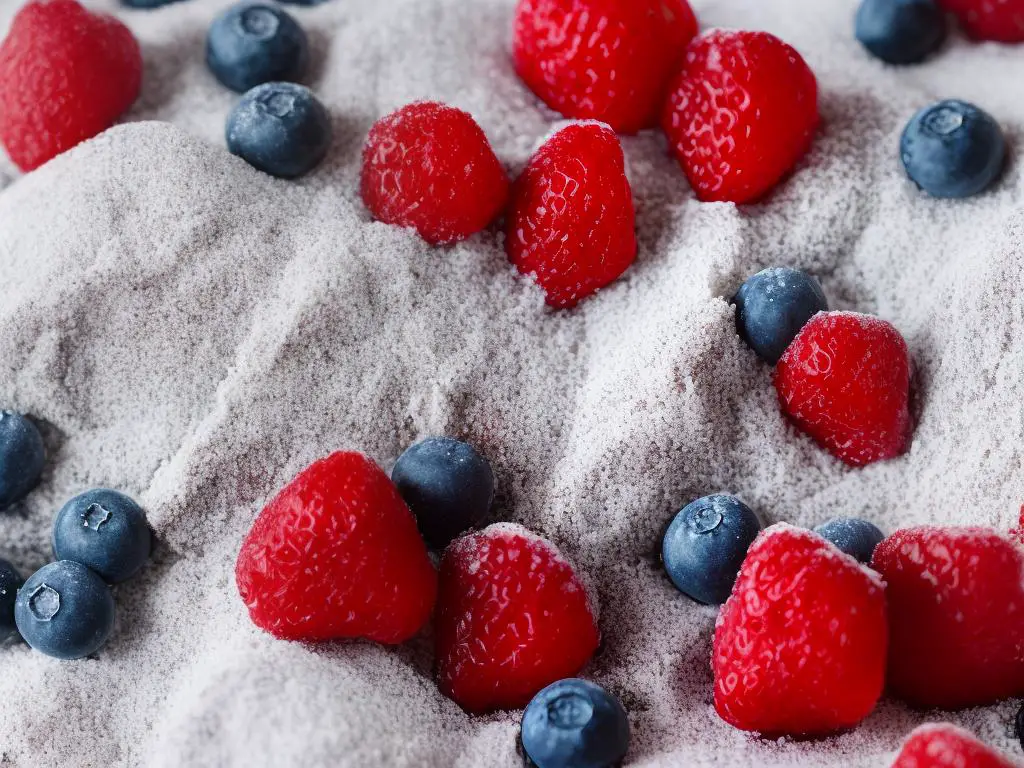
Browning the butter
How to Make Browned Butter Frosting: A Step-by-Step Guide
Browned butter frosting adds a rich, nutty flavor to baked goods, making it the perfect topping for cakes, cookies, and pastries. In this guide, you’ll learn how to brown butter and turn it into a delicious frosting in American English.
Gather your ingredients and tools
For the browned butter frosting, you will need:
- 1/2 cup (1 stick) unsalted butter
- 2 cups powdered sugar
- 2 teaspoons pure vanilla extract
- 3-4 tablespoons milk or cream
You’ll also need a heavy-bottomed saucepan, a heatproof bowl, a whisk, and an electric mixer.
Prepare your work area
Before you start browning the butter, ensure that your work surface is clean and dry. Make sure all the ingredients and equipment are within easy reach.
Browning the butter
Cut the butter into small pieces and place them in the heavy-bottomed saucepan. Heat the saucepan over medium heat, stirring occasionally with a whisk. As the butter melts, it will begin to bubble and make a sizzling noise.
Keep an eye on the butter
Watch the butter carefully during the browning process, as it can go from perfectly browned to burnt quickly. The butter will turn a golden brown color and give off a nutty aroma when it is ready. This should take approximately 5-10 minutes, depending on your stove and the size of your saucepan.
Remove and cool the browned butter
Once the butter has reached the desired color, immediately remove it from the heat and pour it into a heatproof bowl. Stir for a minute or so to help it cool down. Allow the butter to cool to room temperature before proceeding with the frosting. This may take around 20-30 minutes.
Make the browned butter frosting
In a large mixing bowl, combine the browned butter, powdered sugar, and vanilla extract. Use an electric mixer to mix the ingredients on low speed, slowly incorporating the powdered sugar.
Add milk or cream to reach the desired consistency
As you mix the frosting, add in the milk or cream a tablespoon at a time until your frosting reaches its desired consistency. If it’s too thick, add more milk or cream; if it’s too thin, add more powdered sugar.
Beat the frosting
Once you’ve reached the right consistency, beat the frosting on medium-high speed for about 2 minutes to make it smooth and creamy. It should be light and fluffy when you’re finished.
Use your browned butter frosting
After completing these steps, your browned butter frosting is ready to use. Spread or pipe it onto your favorite baked goods for a delicious and unique twist.
Remember that the key to browning butter is patience and close attention to ensure it doesn’t burn. Take your time, and enjoy the rich, nutty flavor of this delicious topping. Happy baking!
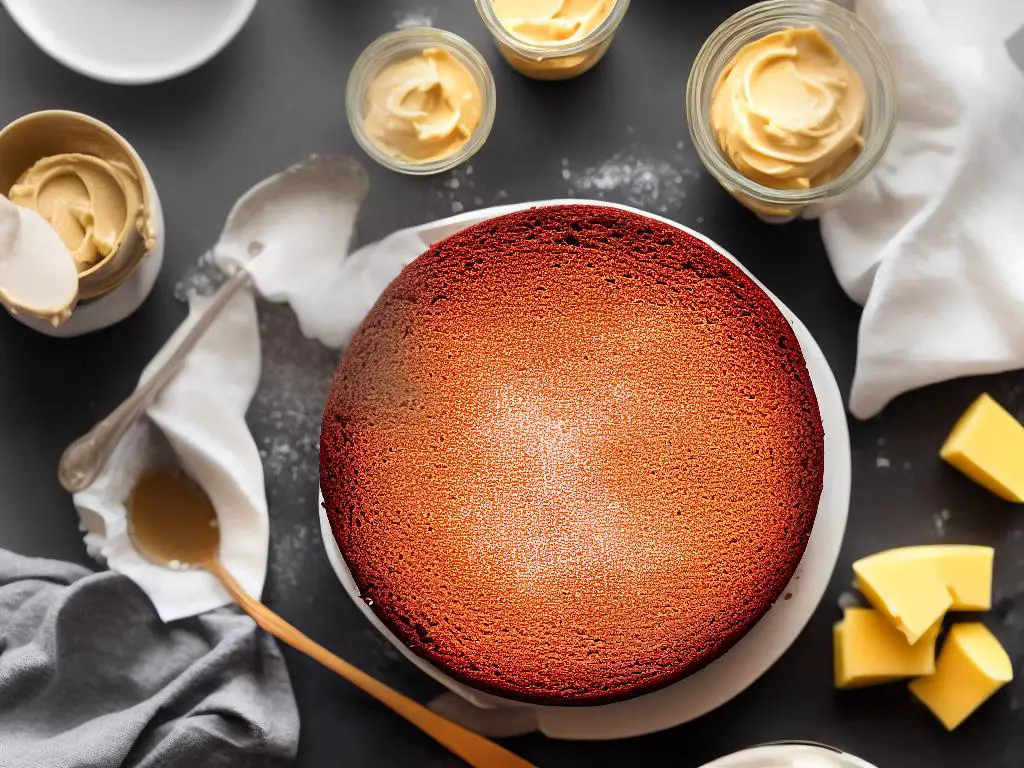
Cooling the browned butter
Title: Cooling the Browned Butter for Frosting
Browned butter frosting is a delicious and popular way to add depth and richness to a variety of baked goods, including cakes, cookies, and pastries. One of the key ingredients in browned butter frosting is, of course, browned butter. Cooling the browned butter before incorporating it into the frosting is crucial to obtaining the desired consistency and texture in the finished product. In this guide, we will discuss the importance of cooling browned butter and the best methods to cool it down before adding it to your frosting.
Why Cool the Browned Butter:
- Prevents separation: Cooling the browned butter first allows it to settle and thicken slightly. If you add hot browned butter to your frosting, the heat may cause the other ingredients, such as sugar and cream, to separate and become grainy. This results in a frosting with an undesirable texture.
- Improves consistency: Browned butter frosting should have a smooth, creamy, and easily spreadable consistency. If you incorporate cooled browned butter into the frosting, it is more likely to blend well with the other ingredients and thicken to the desired consistency.
- Enhances flavor: Allowing the browned butter to cool slightly enables the browned butter’s flavors to develop and deepen, imparting a deliciously rich and nutty taste to your frosting.
Methods for Cooling Browned Butter:
Method 1 – Room Temperature Cooling:
- After you have browned the butter in a saucepan, remove it from the heat to prevent further cooking.
- Pour the browned butter into a heat-proof container, such as a glass measuring cup or bowl.
- Allow the browned butter to cool at room temperature. This process may take about 20-30 minutes, depending on the amount and temperature of the butter. You want the browned butter to be in a softened state but not fully solidified.
- Check the temperature of the browned butter with a kitchen thermometer, if available. The ideal temperature should be around 75°F (24°C) before incorporating it into your frosting.
Method 2 – Refrigerator Cooling:
- Follow steps 1-2 of the room temperature cooling method.
- Place the heat-proof container with browned butter in the refrigerator.
- Check the browned butter’s consistency and temperature periodically, as it will cool more rapidly than at room temperature. This process should take approximately 10-15 minutes.
- Remember to remove the browned butter from the refrigerator once it reaches a softened state but not fully solidified.
Pro Tip: To speed up the cooling process without using the refrigerator, you can place the container of browned butter in an ice-water bath, ensuring that the water level is not high enough to mix with the butter. Stir the butter occasionally to help it cool evenly.
Conclusion:
Cooling browned butter before incorporating it into your frosting is crucial for obtaining a creamy and smooth consistency, preventing separation, and enhancing the flavor. By following either the room temperature or refrigerator cooling method, you can ensure your browned butter is at the perfect consistency for creating a delicious browned butter frosting to accompany your favorite desserts.
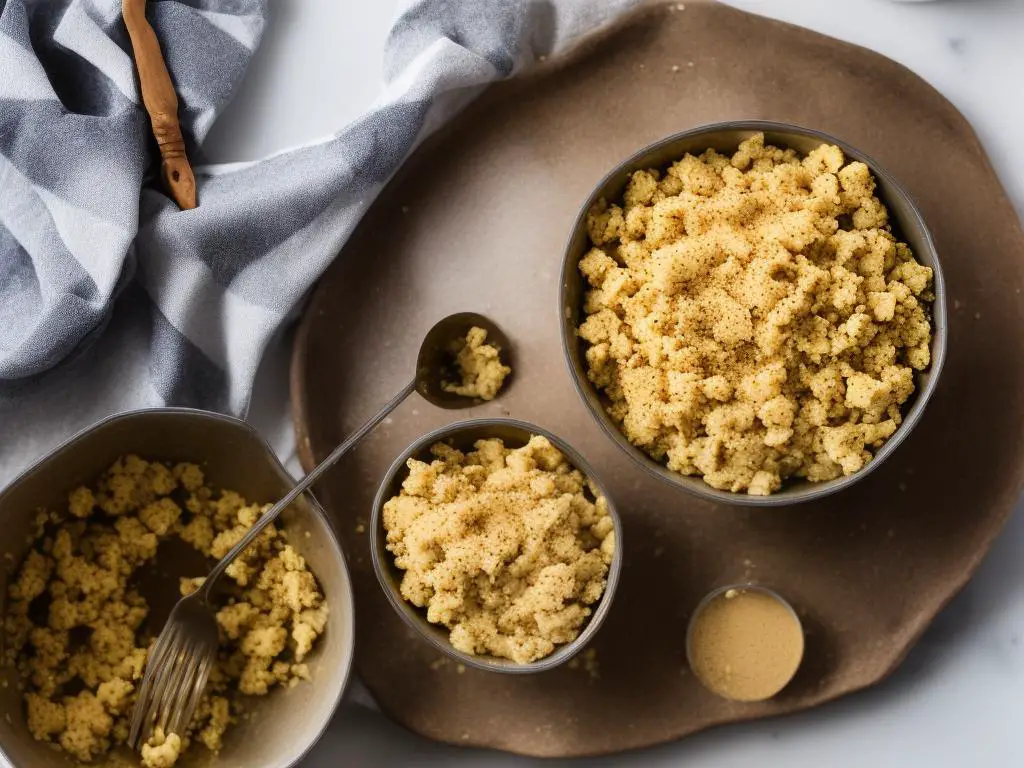
Mixing the frosting
Browned Butter Frosting Recipe:
Ingredients:
- 1/2 cup (1 stick) unsalted butter
- 3 cups powdered sugar (confectioners’ sugar)
- 1/4 cup milk
- 1 teaspoon vanilla extract
- 1/8 teaspoon salt
Instructions:
- Brown the butter:
- In a small saucepan, melt the butter over medium heat.
- Once the butter has melted, continue to cook it, swirling the pan occasionally, until it becomes a light golden brown color with a nutty aroma. This should take about 3-4 minutes.
- Remove the pan from the heat and pour the browned butter through a fine-mesh strainer into a heatproof bowl to remove any solids.
- Allow the browned butter to cool completely to room temperature. This should take about 30 minutes to 1 hour.
- Mix the frosting:
- In a large mixing bowl, add the cooled browned butter.
- Gradually add the powdered sugar, 1/2 cup at a time, into the bowl with the browned butter. Use an electric mixer or a wooden spoon to incorporate the sugar.
- After adding about half of the powdered sugar, mix in the milk, vanilla extract, and salt. Continue mixing until well combined.
- Continue adding the remaining powdered sugar, 1/2 cup at a time, until it reaches your desired consistency. The frosting should be smooth and creamy.
- If the frosting is too thick, you can add more milk, 1 tablespoon at a time, until you achieve the desired consistency. If the frosting is too thin, simply mix in more powdered sugar.
- Use the browned butter frosting to frost your favorite cake, cupcakes, or other baked goods. This frosting is especially delicious on spice cakes, apple cakes, or pumpkin-driven baked goods. Enjoy!

Consistency and texture
Title: Browned Butter Frosting – Achieving the Perfect Consistency and Texture
Introduction: Browned butter frosting is a decadent and flavorful twist on traditional buttercream frosting. By browning the butter before mixing with other ingredients, it adds a rich, nutty flavor that pairs well with many desserts. In this guide, we will provide instructions on how to achieve the correct consistency and texture for your browned butter frosting.
Materials:
- 1 cup unsalted butter
- 4 cups powdered sugar (also known as confectioners’ sugar or icing sugar)
- 1/4 cup milk
- 2 teaspoons pure vanilla extract
- A pinch of salt
Equipment:
- A medium-sized saucepan
- A whisk
- A heat-resistant spatula
- A large, heat-resistant mixing bowl
- An electric mixer with a whisk attachment
Instructions:
- Brown the butter: In a medium-sized saucepan, melt the unsalted butter over medium heat. Once melted, continue to cook the butter, whisking constantly to ensure even browning. The butter will start to foam, and you will begin to see brown bits forming at the bottom of the saucepan. Keep cooking until the butter becomes golden brown and smells nutty. This process should take about 5-7 minutes. Remove the saucepan from the heat and let the browned butter cool for a few minutes.
- Transfer the browned butter to a heat-resistant mixing bowl and allow it to cool to room temperature. This step is critical, as using warm butter can cause your frosting to melt or become too runny.
- Once the browned butter has reached room temperature, add 2 cups of powdered sugar, 1/4 cup milk, 2 teaspoons vanilla extract, and a pinch of salt to the mixing bowl.
- Using an electric mixer with a whisk attachment, beat the ingredients on low speed until combined, then increase the speed to high and continue whipping until the frosting is light and creamy.
- Adjusting the consistency: Check the consistency of your frosting. If it is still too thin and runny, gradually add more powdered sugar, 1/4 cup at a time, while continuing to whip the frosting on medium-high speed. Be sure to check the consistency after each addition of powdered sugar to avoid over-thickening the frosting.
- If your frosting is too thick and difficult to spread, slowly add more milk, 1 tablespoon at a time, while whipping on medium-high speed. Check the consistency after each addition of milk to ensure a smooth, creamy texture.
- Once you have achieved the desired consistency and texture, your browned butter frosting is ready to be used to frost and decorate your favorite cakes, cupcakes, or cookies. Store any unused frosting in an airtight container in the refrigerator for up to one week. Before using chilled frosting, allow it to come to room temperature and give it a quick whisk to maintain that creamy texture.
Conclusion:
Crafting the perfect browned butter frosting requires understanding how to achieve the correct consistency and texture. By following these instructions, you will ensure that your frosting is creamy, smooth, and spreadable, ultimately making your sweet treats even more delicious. Enjoy experimenting with this versatile and tasty frosting option!

Storing and using the frosting
Title: Storing and Using Browned Butter Frosting
Introduction: Browned butter frosting is a delicious and rich topping for your favorite cakes, cupcakes, and other desserts. In this guide, you’ll learn how to store and use browned butter frosting to make your sweet treats even more decadent.
Materials:
- Browned butter frosting
- Airtight container
- Spatula or butter knife
- Piping bag and various piping tips (optional)
Instructions:
Storing Browned Butter Frosting:
- Prepare your browned butter frosting according to your favorite recipe.
- Allow the frosting to cool down to room temperature after preparing it. Placing hot frosting in a container may cause condensation, which will affect its consistency and spoil it quicker.
- Find an airtight container that can comfortably hold all the frosting. Glass or plastic containers work well for this purpose.
- Using a spatula or butter knife, carefully transfer the browned butter frosting into the airtight container, making sure not to leave too much air in the container.
- Secure the lid tightly to avoid air exposure. This will help the frosting maintain its freshness and prevent it from drying out.
- Label the container with the date when it was prepared, so you can keep track of how long it has been stored.
- Store the browned butter frosting in the refrigerator for up to one week. If you don’t plan to use your frosting within a week, you can store it in the freezer for up to three months.
- When you’re ready to use your frosting, take it out of the refrigerator or freezer and allow it to come to room temperature before using it. If it was frozen, it may take a couple of hours to thaw completely.
Using Browned Butter Frosting:
- Ensure that the dessert you will be frosting, such as a cake or cupcakes, is completely cool, as the warmth may cause the frosting to melt and lose its consistency.
- For frosting a cake, you can either use a spatula or butter knife to spread a generous layer of browned butter frosting evenly on the cake. Start from the center and work outward in a circular motion.
- To frost cupcakes or other individual desserts, you can either use a spatula or butter knife as before, or you can use a piping bag with different piping tips to create unique designs and patterns. To do this, transfer the browned butter frosting to a piping bag with your desired piping tip.
- Hold the piping bag at a 45-degree angle, gently squeeze, and swirl the frosting onto your cupcakes or desserts in a circular motion. Experiment with different piping tips and pressure to create a variety of creative designs.
- Serve your frosted desserts immediately, or store them in the refrigerator until you’re ready to enjoy them.
Conclusion: By properly storing and using browned butter frosting, you can enhance the flavor and presentation of your favorite cakes, cupcakes, and other sweet treats. Whether you spread it with a spatula or pipe intricate designs with a piping bag, browned butter frosting makes for a delicious and eye-catching addition to any dessert.
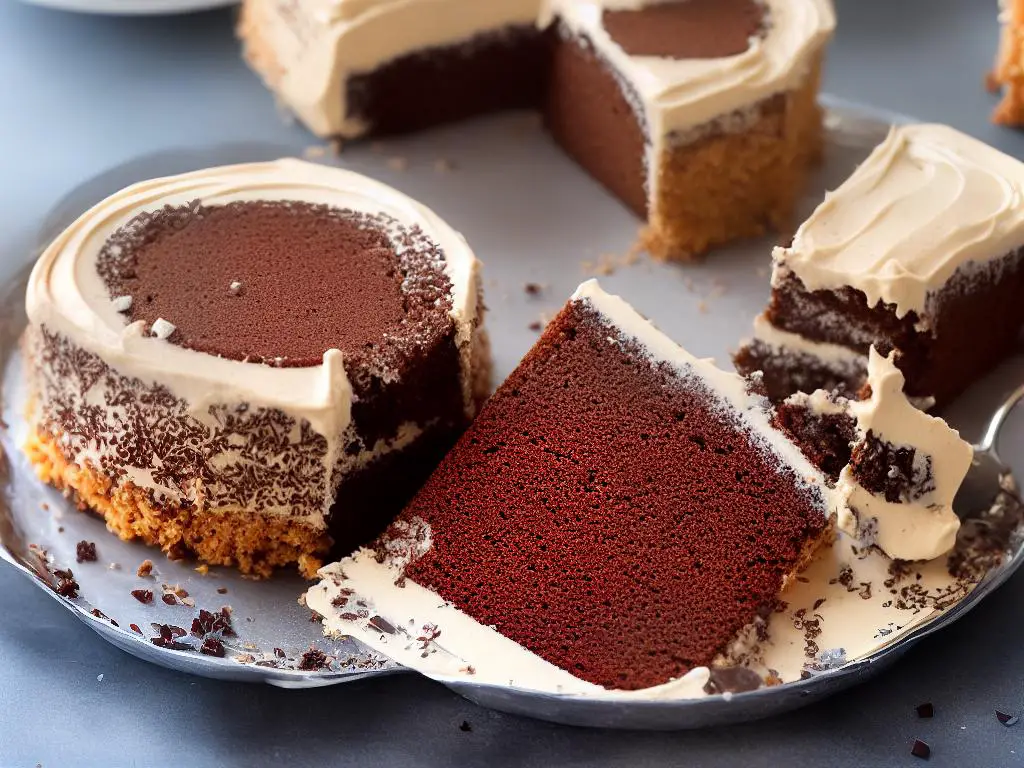
Recipes and variations
Title: Browned Butter Frosting – Recipes and Variations
Browned butter frosting is a delicious treat that will elevate your cakes, cupcakes, or any sweet delights to the next level. This delicious frosting has a rich, nutty flavor due to the browning of the butter, which brings out its deep flavors. We have gathered a few different recipes and variations for you to try – from adding twists using spices to substitutions for healthier options. So let’s begin!
Basic Browned Butter Frosting Recipe:
- Ingredients:
- – 1/2 cup (1 stick) unsalted butter
- – 3 cups powdered sugar
- – 1/4 cup milk
- – 1 tsp pure vanilla extract
- – Pinch of salt
- Instructions:
- In a small saucepan, melt the butter over medium heat. As the butter begins to foam, stir it gently and keep cooking it until it turns a golden brown color. It is essential to keep stirring during this process to avoid burning the butter.
- Remove the browned butter from heat, and transfer it to a heatproof bowl. Allow it to cool for about 30 minutes until it reaches room temperature.
- In a large mixing bowl, whisk together the powdered sugar, milk, vanilla extract, and salt until smooth.
- Gradually add the cooled browned butter to the sugar mixture, and whisk until fully incorporated.
- Once combined, you can use the frosting immediately or store it in an airtight container in the refrigerator until needed. If stored, make sure to bring it to room temperature before use.
Variations:
- Spiced Browned Butter Frosting: To give your frosting a warming touch, add 1 teaspoon of ground cinnamon, 1/4 teaspoon of ground ginger, and 1/8 teaspoon of ground cloves or allspice to the basic recipe. This version is perfect for spiced cakes or pumpkin treats!
- Maple Browned Butter Frosting: Substitute 1/2 cup of pure maple syrup for the milk and reduce the powdered sugar to 2 cups. The addition of maple syrup provides a delightful autumnal twist that pairs well with carrot cakes or apple desserts.
- Coffee Browned Butter Frosting: Add 1 tablespoon of instant coffee powder to the browned butter while it is still warm. Stir until the coffee powder dissolves completely. Follow the basic recipe for a rich, coffee-flavored frosting that goes exceptionally well with chocolate cakes or brownies.
- Honey Browned Butter Frosting: Substitute 1/4 cup of honey for the milk, and use only 2 cups of powdered sugar. This variation results in a slightly softer, gooey frosting that has a subtle honey flavor, great for drizzling over cookies or muffins.
- Coconut Sugar Browned Butter Frosting (Alternative Sweetener): Replace the powdered sugar in the basic recipe with an equal amount of coconut sugar that has been processed into a fine consistency with a food processor. This alternative makes for a healthier option with hints of caramel and molasses flavors.
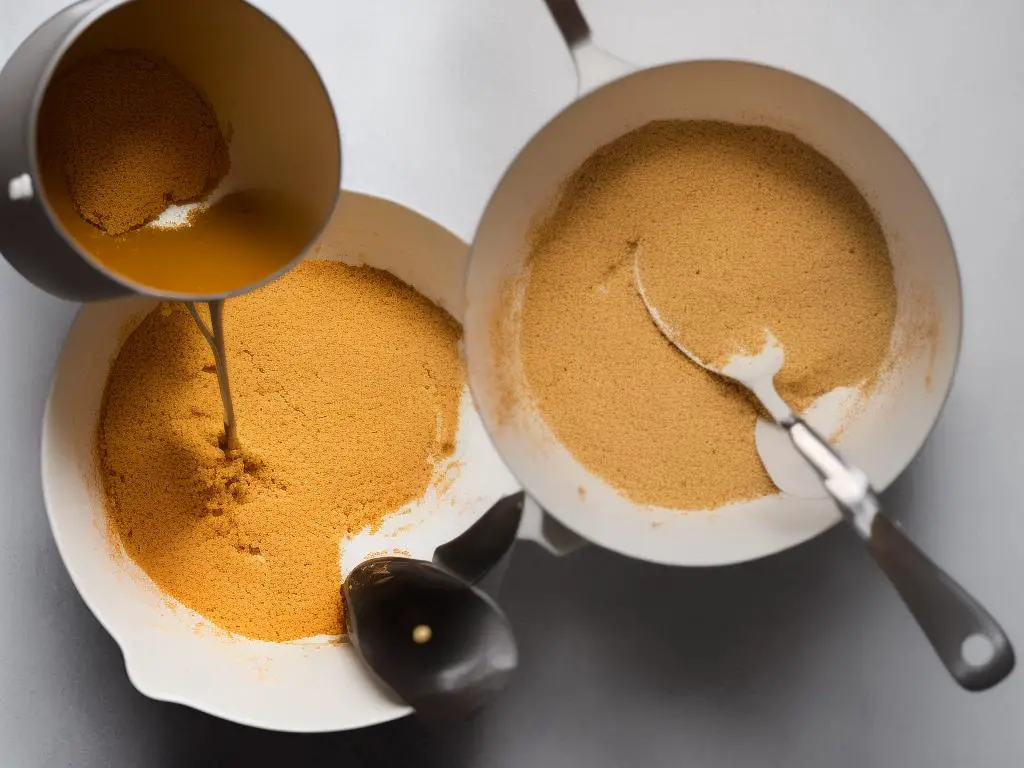
With these valuable tips and tricks under your belt, you’re well on your way to mastering the art of browned butter frosting. Enjoy the process of experimenting with different recipes and variations, and don’t be afraid to get creative with your flavor combinations. Most importantly, have fun and relish the satisfaction of crafting a truly exceptional frosting that your friends and family will love.
